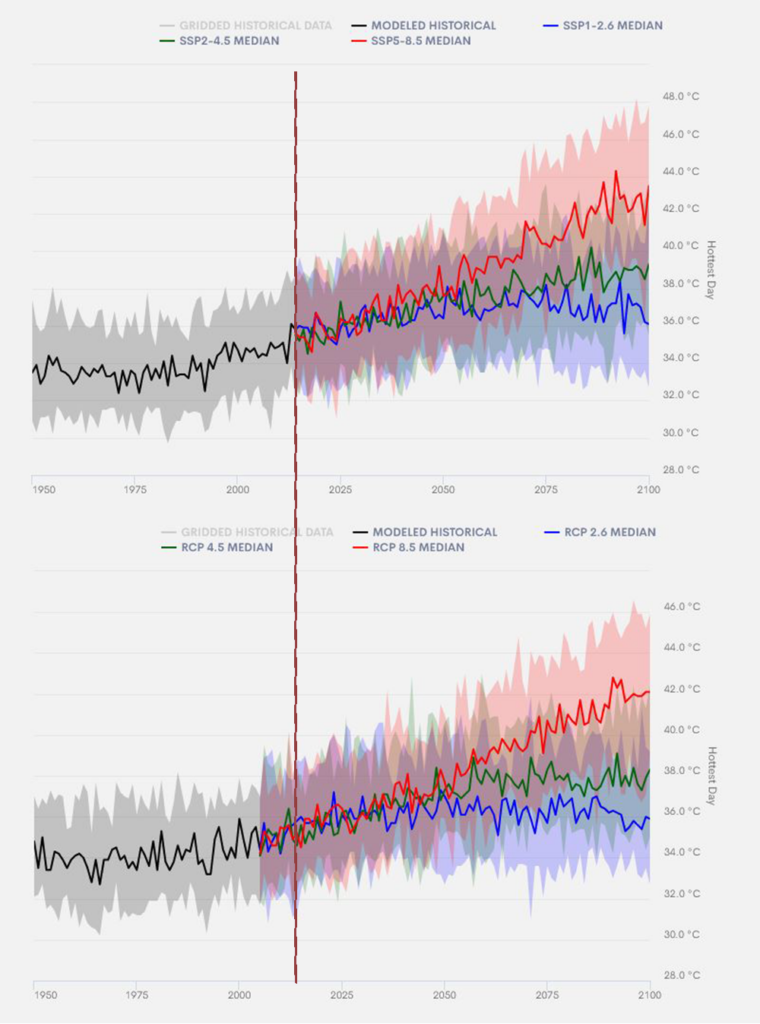ClimateData.ca provides projections from two phases of the Coupled Model Intercomparison Project, CMIP5 and, most recently, CMIP6.
One of the differences between these two climate model ensembles is the duration of the historical and future components of the simulations. In the earlier CMIP5 models, the historical component of the simulation ends in 2005, with the future simulations beginning in 2006 and continuing until the end of the century. In the more recent CMIP6 ensemble, the historical simulation ends in 2014, the future simulations begin in 2015 and, as CMIP5, continue out to 2100. This means that the versions of climate models that you choose to work with (i.e., whether you are using CMIP5 or CMIP6 models) will dictate what historical modelled data are available for you to use as a baseline.
Choosing the Right Baseline
It is best practice to use a baseline period from the historical component of the simulation and not one that spans both the historical and future components. While there is not a great difference among the emissions scenarios in the early years of the future simulations, it is best to avoid including years which are part of the future simulation.
For instance, if you’re using CMIP5, the most recent 30-year baseline that would include only modeled historical data is 1976-2005. The period 1971-2000 is a popular option.
With CMIP6, on the other hand, you could choose a more recent baseline such as 1985-2014, or stick to complete decades with a baseline of 1981-2010. You could also use the same 1971-2000 baseline as with CMIP5.
The Rationale Behind Your Choice
You might choose a more recent baseline for its relevancy, such as opting for 1981-2010 over 1971-2000 if you’re using CMIP6. However, if you aim to compare your work with previous studies, it would be best to use the same baseline as the earlier work.
Moreover, it’s crucial to note that ClimateData.ca uses a baseline period of 1971-2000 in its delta calculations. The delta, or change, is the difference between the 30-year averages of a future time period (e.g., 2041-2070) and the reference period (or baseline) for a given climate variable. Using this period as a baseline means you could obtain the delta values directly from the website, and it allows you to see the differences in climate projections between CMIP5 and CMIP6 for the same baseline period.
What About Historical Observation Data?
While modelled historical data is ideal for comparing future projections with simulated past conditions, historical observation data is invaluable for linking to past impacts. This will give you a fuller picture and help you examine the relationships between climate data and climate impacts experienced (e.g., looking at what impacts happened during very hot days in heatwaves).









